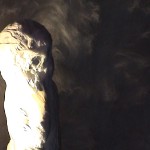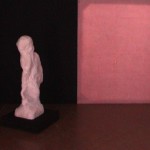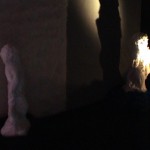
ecstatic 1.2.3.4.5. Glorious Mother
Extatic - 1 Tebaide
Extatic - 2 Great sinner
Extatic - 3 Samaritan woman
Extatic - 4 Mary Egyptian
Extatic - 5 Penitent
A Faustian themed installation divided into five sequences halfway between visual arts and actor performance. A series of five performative events between art and theater created by Maria Federica Maestri are enclosed in Extaticus, who take their name from the as many visions of female figures who accompany Faust at the time of his death.
E’ Faust's death the central theme of Extaticus, A death that comes to the end of Goethe's capital work (1832) And it is temporally placed a short distance from the real death of the author who for over sixty years had dedicated himself to the drafting of his masterpiece: “Everything I have left from now on, I can consider it a gift; it is without importance whether I will still write something or not”, Goethe says after giving birth to the last pages of the Faust.
It is traditional to think that in the instant preceding death, see the images that have composed their lives in front of them: At the moment of passing from corporeality to the spiritual life Faust is accompanied by five visions of female figures who help him reach a regenerated, higher form of existence. They are figures that Goethe takes up from the Christian tradition (Great sinner, Samaritan woman, Mary Egyptian); among them, For Faust's regeneration it plays a fundamental role, thanks to its ancient act of sacrificial love, Margherita, now called “A Penitent”.
EXTATICUS is the name given by Goethe to one of the Fathers of the Church, intermediaries between man and God, who appear in Faust in this progressive ascension towards the high spheres. Pater Extaticus reveals the four states of eternal love: “Volutoso fire, hot love knot, Coocente heart pain, divine overflowing intoxication " . In the five sequences that make up the installation, Faust's path towards achieving the spiritual state will therefore be accomplished.
Not a merely visual event, nor a properly theatrical format therefore, rather a wider frame that encloses both, a sort of aesthetic action, A poietic of ecstasy capable of containing the actor's body and that of the viewer in an instantaneous time and in a limited space, the threshold that divides the existence from its representation.
The use of Extaticus installations takes place for a single spectator at a time.























